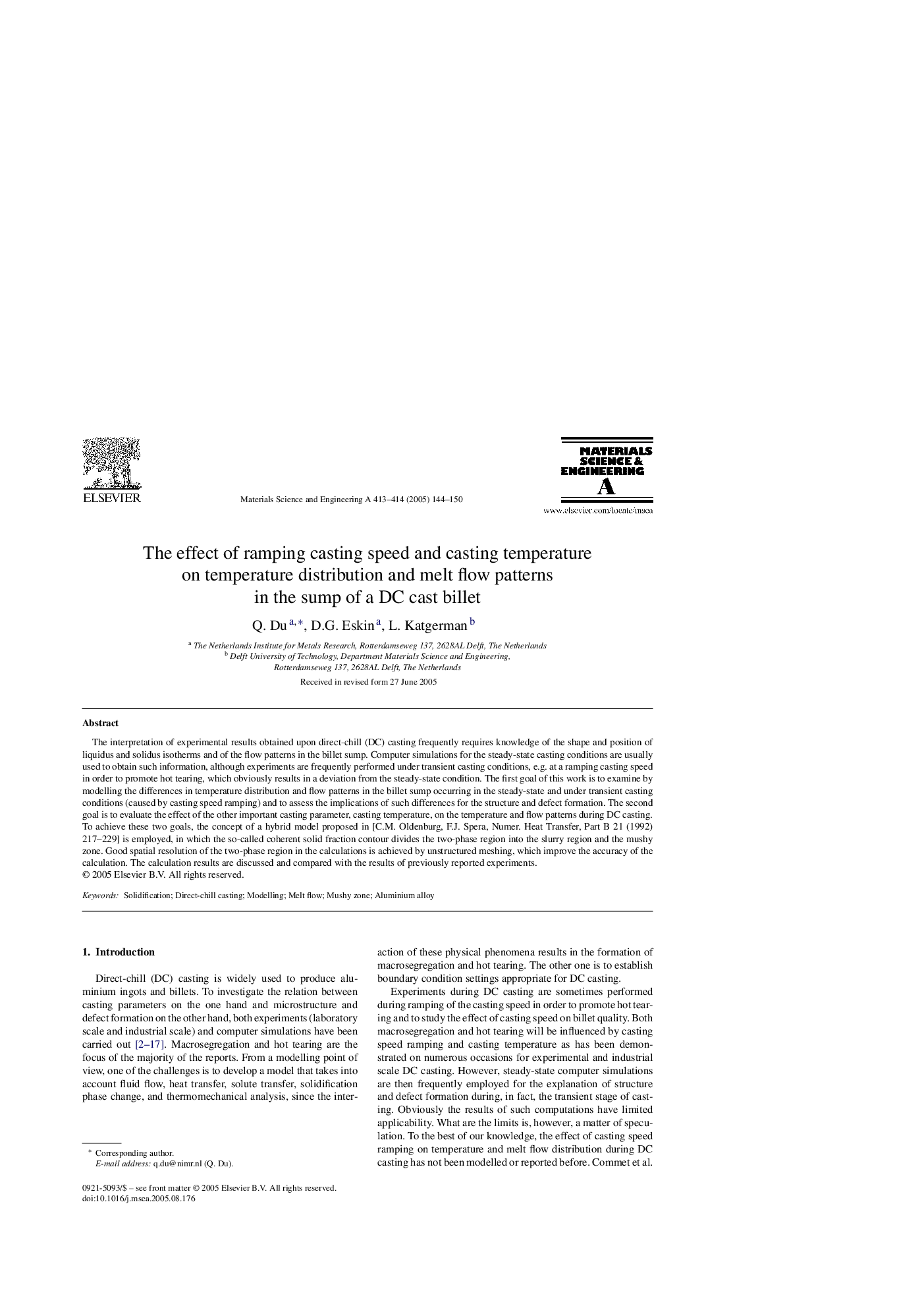| Article ID | Journal | Published Year | Pages | File Type |
|---|---|---|---|---|
| 9795463 | Materials Science and Engineering: A | 2005 | 7 Pages |
Abstract
The interpretation of experimental results obtained upon direct-chill (DC) casting frequently requires knowledge of the shape and position of liquidus and solidus isotherms and of the flow patterns in the billet sump. Computer simulations for the steady-state casting conditions are usually used to obtain such information, although experiments are frequently performed under transient casting conditions, e.g. at a ramping casting speed in order to promote hot tearing, which obviously results in a deviation from the steady-state condition. The first goal of this work is to examine by modelling the differences in temperature distribution and flow patterns in the billet sump occurring in the steady-state and under transient casting conditions (caused by casting speed ramping) and to assess the implications of such differences for the structure and defect formation. The second goal is to evaluate the effect of the other important casting parameter, casting temperature, on the temperature and flow patterns during DC casting. To achieve these two goals, the concept of a hybrid model proposed in [C.M. Oldenburg, F.J. Spera, Numer. Heat Transfer, Part B 21 (1992) 217-229] is employed, in which the so-called coherent solid fraction contour divides the two-phase region into the slurry region and the mushy zone. Good spatial resolution of the two-phase region in the calculations is achieved by unstructured meshing, which improve the accuracy of the calculation. The calculation results are discussed and compared with the results of previously reported experiments.
Related Topics
Physical Sciences and Engineering
Materials Science
Materials Science (General)
Authors
Q. Du, D.G. Eskin, L. Katgerman,
